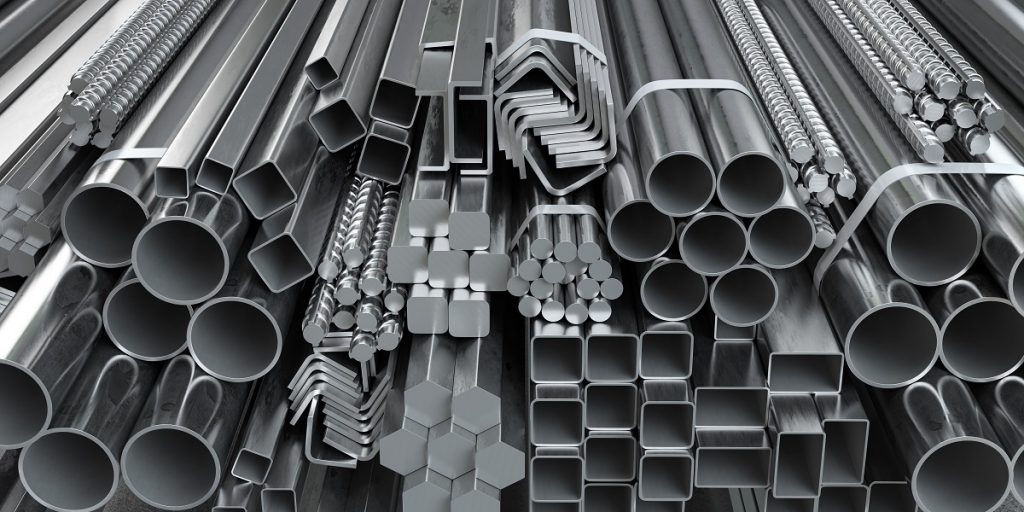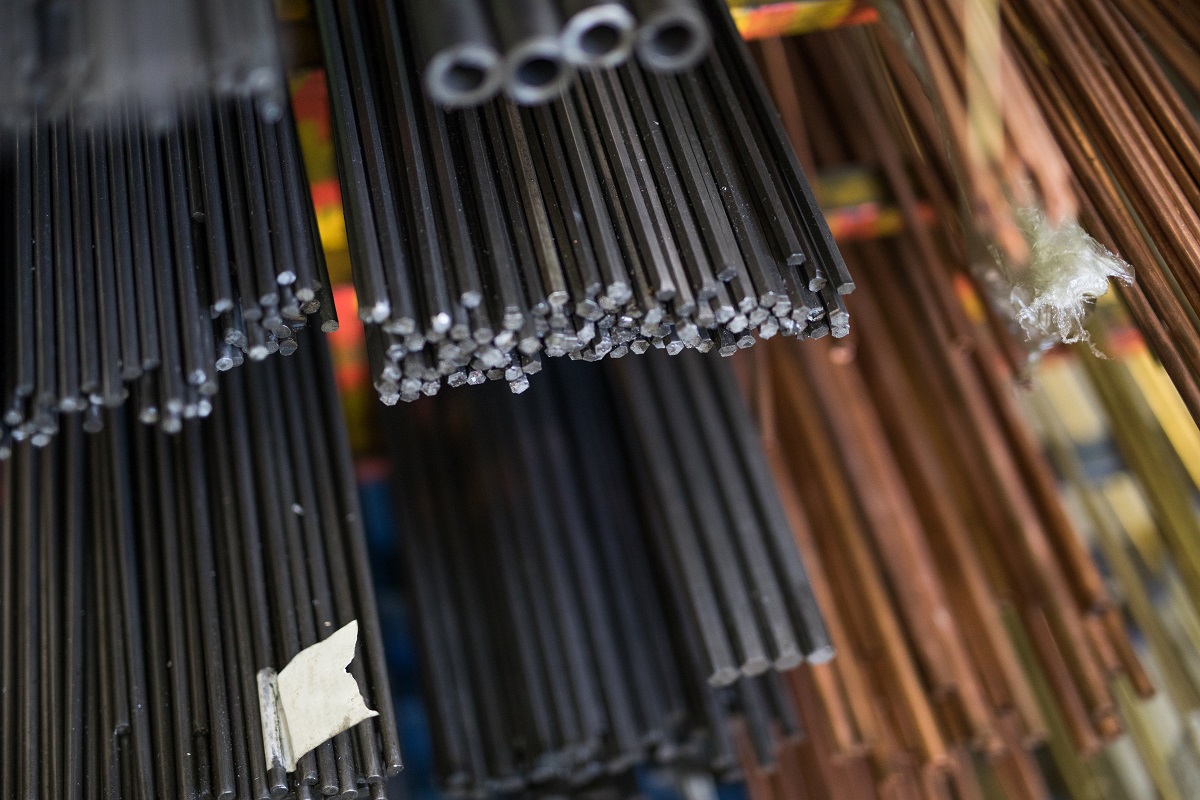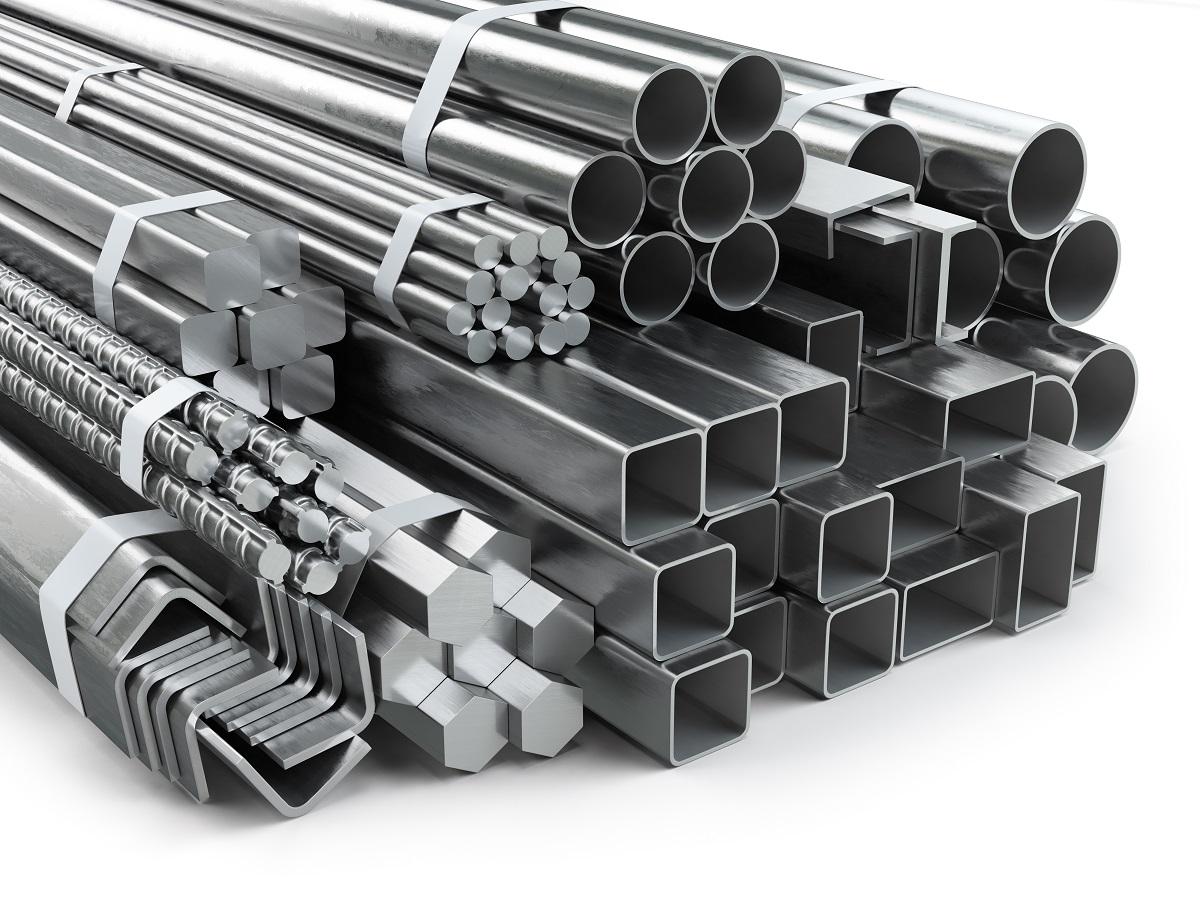The Difference Between Ferrous and Non-Ferrous Metals

What is the difference between ferrous and non-ferrous metals?
- Iron content
- Characteristics and properties
- Examples and uses
Metals have been used by humans for thousands of years, dating back to the mid-5th millennium BC upon the discovery of copper and the start of the Copper Age. Since then, more and more metals have been discovered, created, and used by people, leading to the wide selection of materials that are still used today in metal fabrication. From this selection, experts sorted metals into two categories: ferrous and non-ferrous metals.
But what is the difference between ferrous and nonferrous metals, and why does it matter? These two groups are divided due to their distinctive properties, which allow them to fulfill different applications. This makes a differentiation between the two groups — which we cover in this article — critical for metal fabrication purposes.
Iron Content

The main difference between ferrous and non-ferrous metals lies in their composition. The word “ferrous” comes from the Latin term “ferrum,” which translates to “containing iron.” Thus, ferrous metals are those that contain iron, while non-ferrous metals are those that do not.
Both ferrous and non-ferrous metals may be raw metals, purified metals, or alloys. The presence or lack of iron affects the physical, mechanical, and chemical properties of the metal. These properties in turn determine which applications they are best suited for.
Characteristics and Properties
The qualities that metals are prized for, such as tensile strength, magnetism, and durability, are affected by the percentage of iron in their composition. The following characteristics and properties differ between ferrous and non-ferrous materials:
- Density and strength — Iron is extremely dense and can be extremely strong when mixed with carbon. This makes ferrous materials much more sturdy than non-ferrous metals.
- Malleability — Because of iron’s density, ferrous metals tend to be less malleable and ductile than non-ferrous metals.
- Rust resistance — Ferrous metals have higher carbon content than non-ferrous metals. As a result, they are more susceptible to oxidation when exposed to the elements. However, those with higher iron content (such as wrought iron) tend to resist this effect as a majority of its composition is iron. Non-ferrous metals have no iron at all, so they naturally have higher resistance to rust and corrosion.
- Magnetic properties — Iron is magnetic, so most ferrous metals have magnetic properties. Likewise, non-ferrous metals aren’t magnetic.
- Weight — Iron is a dense and heavy material, which makes ferrous metals much heavier on average compared to non-ferrous metals.
- Cost — Non-ferrous metals tend to be more expensive, due to their relative scarcity and being harder to process.
- Recycling — Both types of metals are recyclable. Non-ferrous metals can be recycled without degrading or losing any of their value or properties. Ferrous metals have a more extensive recycling process, needing to be melted and purified before being compacted into solid blocks.
Ferrous Metals Examples and Uses

Many ferrous metals differ in iron content, which makes them applicable for different uses and industries.
Steel
Steel is primarily composed of iron and carbon and is an extremely hard and durable alloy. This can be further enhanced by adding other materials, such as chromium and nickel. Steel alloys are made by melting iron ore, which is then poured into molds to form steel bars. This type of ferrous metal is often used in construction, electrical, and manufacturing applications.
Carbon Steel
Carbon steel is a type of steel alloy with higher carbon content. As a result, it has one of the highest tensile strengths compared to other ferrous metals. Carbon steel is commonly used in machine components, such as tooling, blades, springs, taps, and the like. It is valued for its ability to withstand tension and maintain a sharp cutting edge.
Cast Iron
Cast iron is a type of ferrous alloy made from iron, carbon, and silicon. Cast iron is strong but tends to be more brittle due to the presence of silicon. However, it’s very resistant to wear, which makes it usable for machine tools, kitchenware, engine components, and water pipes.
Wrought Iron
Wrought iron’s main component is iron — it has so little of anything else that it’s nearly purely made of iron. When wrought iron is made, some slag is added to the alloy, which enhances its resistance to rust and corrosion. However, this process also makes it less hardy and strong. So, it’s typically used for railings, nails, wires, chains, and other ornamental pieces. It can also be used in some agricultural implements.
Non-Ferrous Metals Examples and Uses
Like ferrous metals, there are also different kinds of non-ferrous metals. Each one has distinctive properties that make them useful for different products and industries.
Aluminum
Lightweight, malleable, and low-strength, it is easily machined and welded. It’s not suitable for extreme weather and temperatures unless anodized or alloyed with other elements. Its lightness makes it a good material for applications where weight is a critical factor, such as packaging, housings and casings, and aircraft.
Copper
Copper is a highly ductile, conductive, and malleable non-ferrous metal. It’s great in applications where electricity or heat needs to be transferred. As such, it’s most commonly used in the electrical industry to make wires and other conductors. Copper can also be used to make decorative and ornamental pieces, such as doorknobs, jewelry, railings, tabletops, and the like.
Lead
Lead is a heavy yet pliable and soft metal. It has a low melting point, low tensile strength, and high resistance to corrosion by moisture and acid. These properties make it a good choice for electronics, such as batteries, power cables, and cable sheaths. It can also be used in construction for soldering other metals together.
Zinc
Zinc is a non-ferrous metal with a very low melting point and medium strength. It can be machined easily but is most commonly used in galvanizing. In this process, zinc is used to create a protective layer against ferrous metals (like iron and steel) to enhance their resistance to rust and corrosion.
Key Takeaway
In metal fabrication, knowing the difference between ferrous and nonferrous metals, and the distinct qualities and applications of the various metals under both categories is key to picking the right material for your project.
The best choice all boils down to your project needs — and an experienced metal fabricator, like Metal Exponents, can help you in this decision-making process. If you need such services and want to learn more about these metals and how they will work in your desired application, send a message here. Our team will be happy to help you with your project!


